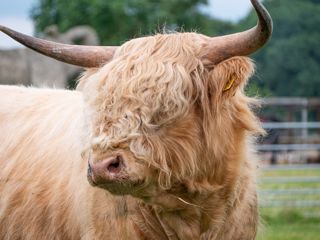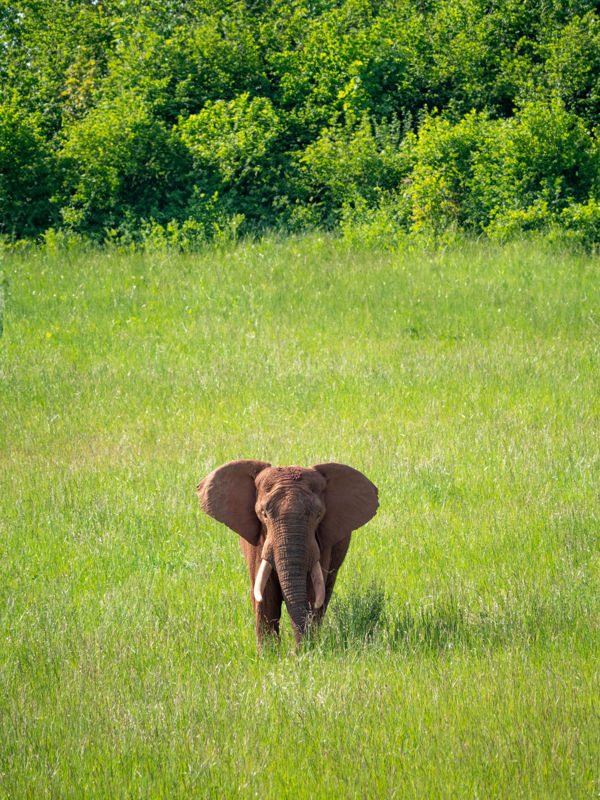Welcoming Hamish: Our Newest Highland Cow!
29th Jul 2024

There's a buzz in the farm fields this summer as we welcome a new Highland cow called Hamish! Our Highland cow family now includes Agnes, Bonnie, Merida, Hamish, and now another Hamish. Each of our Highland cows is a unique colour, showcasing the full spectrum of Highland colours.
"Our new bull is settling in well with our existing herd. He is a lovely quiet-natured bull and can be easily identified by his white curly fringe," says Head Farm Keeper Eleanor Steeds.
Hamish's arrival has been a great addition to our farm, and we’re anticipating that he will quickly become a favourite among visitors and staff alike. His calm demeanour and distinctive appearance make him stand out in our farm fields.
A Glimpse into the World of Highland Cows
Highland cows, also known as Highland cattle, are a well-loved breed known for their long horns and shaggy coats. Originating from the Scottish Highlands, these cows are well adapted to harsh climates and rugged terrains.
Distinctive Features
Highland cows are easily recognisable by their long, flowing hair and impressive horns. Their coats can come in a variety of colours, including black, brindle, red, yellow, white, and dun. This long hair helps them stay warm in the cold, wet conditions of their native Scotland.
One of the unique aspects of Highland cows is their double coat. The outer layer is long and oily, repelling rain and snow, while the undercoat is soft and fluffy, providing insulation. This adaptation allows them to thrive in environments that would be challenging for other cattle breeds.
Temperament and Behaviour
Highland cows are known for their gentle and docile nature. Despite their size and big horns, they are generally friendly animals.
Highland cows are social animals and prefer to live in herds. They have strong maternal instincts, and the cows are known to be very protective of their calves. This social structure helps them thrive and maintain strong bonds within the herd. Agnes recently gave birth to Hamish here at Noah’s Ark Zoo Farm in April, and both mum and calf have been doing very well.
Diet and Grazing
Highland cows are excellent foragers and can graze on a variety of vegetation. They are well-suited to rough terrains and can thrive on land that is less suitable for other types of livestock. Their diet mainly consists of grass, but they can also eat hay, shrubs, and even seaweed in coastal areas.
Their foraging ability makes them valuable for sustainable farming practices. Highland cows can help manage landscapes by keeping vegetation in check and promoting biodiversity through their grazing habits.
Conservation and Popularity
Today, Highland cows are found all over the world, from Europe to North America, and even in Australia and New Zealand. Their popularity has grown not only because of their hardiness but also due to their striking appearance and gentle nature.
Conservation efforts have helped maintain the purity of the breed, and Highland cows continue to be a symbol of Scottish heritage. Many farms and breeders are dedicated to preserving this historic breed, ensuring that Highland cows will be a part of our agricultural landscape for generations to come.
Meet Hamish!
We invite you to visit us here in North Somerset and meet Hamish and the rest of our Highland cow family. Watch them graze in the fields, learn more about their unique characteristics, and experience the charm they bring to our farm fields. Hamish, with his white curly fringe and gentle nature, is sure to win your heart just as he has ours.

Sign Up to the newsletter
Would you like to receive marketing emails from us? Please tick the box if you would like to receive information about future events, ways you can support our charity, offers and discounts.



